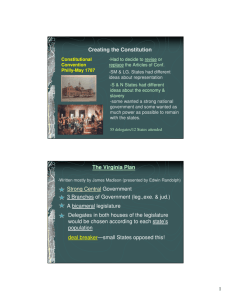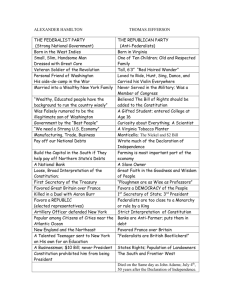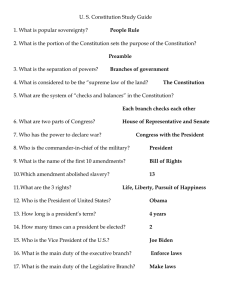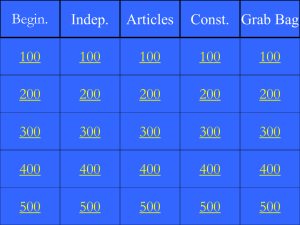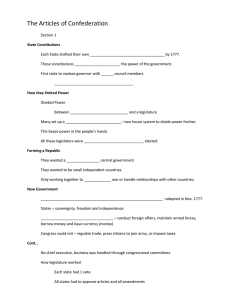Ch. 5 review key
advertisement
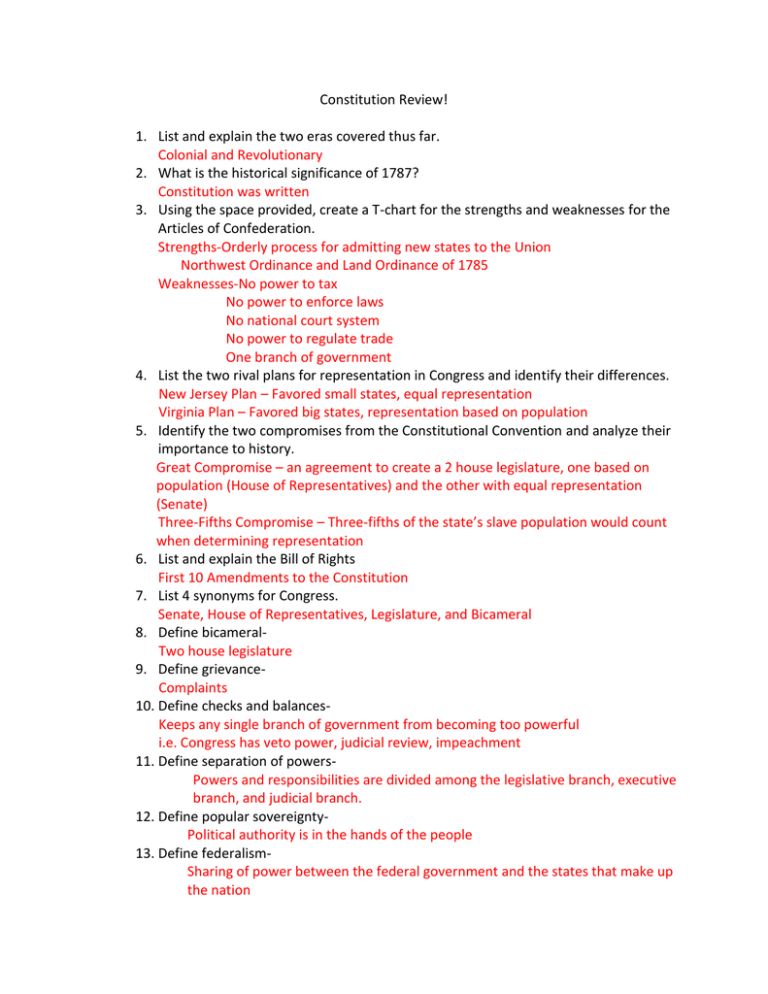
Constitution Review! 1. List and explain the two eras covered thus far. Colonial and Revolutionary 2. What is the historical significance of 1787? Constitution was written 3. Using the space provided, create a T-chart for the strengths and weaknesses for the Articles of Confederation. Strengths-Orderly process for admitting new states to the Union Northwest Ordinance and Land Ordinance of 1785 Weaknesses-No power to tax No power to enforce laws No national court system No power to regulate trade One branch of government 4. List the two rival plans for representation in Congress and identify their differences. New Jersey Plan – Favored small states, equal representation Virginia Plan – Favored big states, representation based on population 5. Identify the two compromises from the Constitutional Convention and analyze their importance to history. Great Compromise – an agreement to create a 2 house legislature, one based on population (House of Representatives) and the other with equal representation (Senate) Three-Fifths Compromise – Three-fifths of the state’s slave population would count when determining representation 6. List and explain the Bill of Rights First 10 Amendments to the Constitution 7. List 4 synonyms for Congress. Senate, House of Representatives, Legislature, and Bicameral 8. Define bicameralTwo house legislature 9. Define grievanceComplaints 10. Define checks and balancesKeeps any single branch of government from becoming too powerful i.e. Congress has veto power, judicial review, impeachment 11. Define separation of powersPowers and responsibilities are divided among the legislative branch, executive branch, and judicial branch. 12. Define popular sovereigntyPolitical authority is in the hands of the people 13. Define federalismSharing of power between the federal government and the states that make up the nation 14. List the authors of the Federalist Papers and explain its importance. Madison, Jay, and Hamilton – Essays supporting ratification of the Constitution 15. Compare and contrast the beliefs of Federalists and Anti-Federalists. Federalists – For a strong central government, supported Constitution Anti-Federalists-For strong state governments (state’s rights), refused to ratify Constitution without Bill of Rights 16. Identify the amendment process and its purpose. Two-thirds of each house of Congress and three-fourths of the states must approve a change before it takes effect Purpose: Allows the Constitution adjust for changing times 17. What is the purpose of the Constitution? Government’s “rule book” 18. Identify the three branches and explain their role in government. Legislative – Creates laws Executive – Enforces laws Judicial – Interprets laws



